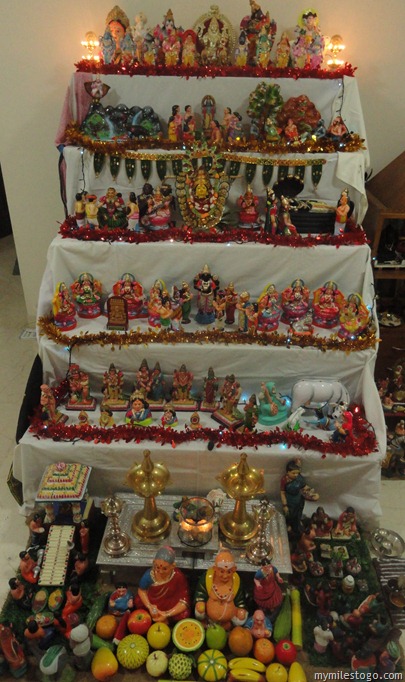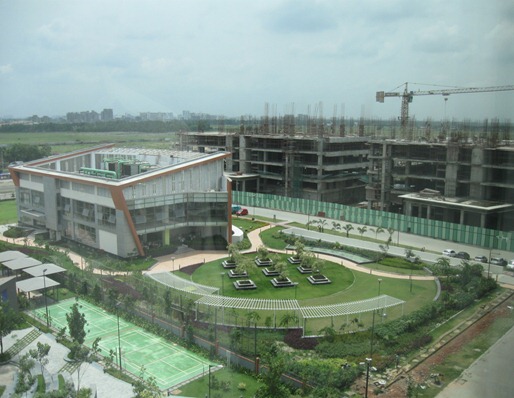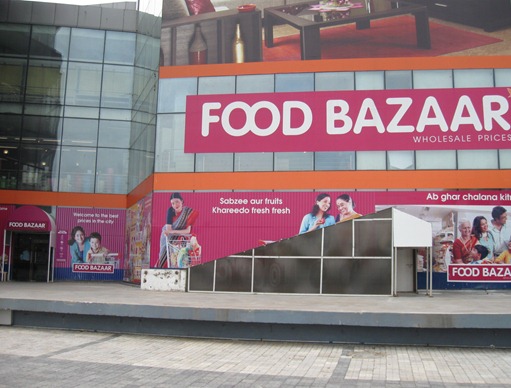
“I was an eternal optimist, now I am a cautious optimist” thus remarked Kishore Biyani, considered to be the most revered Retail face in India at the concluding day of India Retail Forum 2010 recently held at Mumbai. Not surprising, as he should know better than anyone else, for he leads the Indian Retail Industry with the highest recorded turnover of over USD 2 Billion in Sales from The Future Group that has various formats such as Big Bazaar (Hypermarkets), Central Malls, Home Town, Pantaloon Department stores, Food Bazaar (Supermarkets) and many other formats with over 800 stores across the country. Many other CEOs and leaders from within the Indian Retail Industry echoed the same feeling – things are much better than 2008 / 2009 but we should tread with caution. Consumer confidence is on the high, but that doesn’t mean we can open stores left & right, one needs to move ahead with all the learning over the past 24 months according to the Head of Operations of one of the leading apparel brands in India.

India Retail Forum (IRF) is the annual extravaganza organized by the Images Group that publishes various magazines such as Images Retail, Images Fashion, F, and many other collaborative efforts with leading international publications. Apart from IRF, they also conduct Images Fashion Forum and Images Food Forum every year. These Forums are not mere conferences but a place of congregation where some of the brightest minds participate, share and learn over each other’s experiences. The two day events are busy days, with back-to-back & parallel panel discussions and presentations from eminent speakers and delegates trying to network with their peers across businesses for professional as well as personal purposes. This year saw over 2,000 participants – not bad for an event that charges an entry fee of Rs. 25,000 per person which includes lunch and dinner with cocktails on both days along with an entry invitation to the Images Retail Awards – the most sought after respectable awards that recognize the efforts of Retailers.

The agenda this year too was chock-a-block. Over the years, the event has evolved and now follows international conventions where three things happen in parallel – the main conference hall with its speakers, the retail theatre and the ball rooms with their sessions and workshops and the all day exhibition stalls where various retailers and real estate companies showcase their latest offering. The Forum was chaired this year by Mr. Biju Kurien, Chief Execuitive – Lifestyle, Reliance Retail along with the Chairman of the previous year, Mr. B.S.Nagesh, Vice Chairman of Shoppers Stop Ltd. In his opening remarks, Mr. Kurien said that India is expected to contribute 7.5% of world GDP (PPP) and stressed on the need for increased investments within the sector to foster growth. Mr. Nagesh reiterated that it was important to focus on the product offering rather than showering discounts while also informing that controlling attrition would be one of the key tasks for Retailers. Mr. Vikram Bakshi, CEO – Mc Donalds India (North & East) shared his thoughts on the current trends in food retail during his opening remarks. This was followed by a detailed presentation by Ms. Ireena Vittal, Principal, McKinsey India in which she shared statistics about the current trends and opportunities in Indian Retail with lots of comparison to similar markets such as Brazil and China. This was followed by the Confederation of Indian Industry (CII) panel discussion on “Permitting FDI in Indian multi-brand Retail” led by its Chairman, Mr. Thomas Verghese, Chief Executive – Aditya Birla Retail which had the most looked up names within the industry – Mr. Kishore Biyani, CEO – The Future Group, Mr. Raj Jain, President – Walmart India & MD & CEO, Bharti Walmart, S. Sivakumar, Chief Executive – ITC Rural Retail, Ireena Vittal, Vikram Bakshi and BS Nagesh. With various thoughts being expressed by speakers, the unanimous view was clear and forthcoming – India needed investments urgently to support the backend and frontend of our Retail businesses and the color of the money (Read FDI or FII or any other) really didn’t matter.
The rest of the day and the second day had various sessions by leaders within the Retail industry and community and delegates were seen sharing an easy camaraderie with one another, be it over coffee or beer. I was part of one of the Panel Discussions on Multi channel Retailing, hosted by vCustomer which has been a support partner to companies across multiple retail channels. With a 4000+ global workforce deployed at its managed centers from multiple locations worldwide, they deliver 24x7 services to more than 75 global clients including 20 Fortune 500 brands and more than 30 retailers. My co-panellists were Mr. Sanjay Gupta, COO – vCustomer, Mr. Ashish Madhav, Director Retail CoE, vCustomer, Mr. Rajiv Prakash, CEO – Future Ecommerce, Mr. Manoj Chandra, VP Marketing - Bata India, Mr. Sundeep Malhotra, CEO – HomeShop18 and Mr. Neeraj Bhalla, Director – Whirlpool. The speakers shared their perspectives on multi-channel use for better reach towards their own consumers. My view was similar too, that Cafe Coffee Day was always at the reach of its consumers be it shopping high streets or malls, transit points or other non-traditional locations such as Hospitals, Colleges, Hotels and Clubs.
The most awaited session happened to be an interview with Mr. Kishore Biyani by none other than Mr. Shivnath Thukral, Group President, Corporate Branding & Strategic Initiatives – Essar Group, more famous in his previous avatar as the former Group Business Editor at NDTV, India’s leading News channel. The session was indeed candid and Mr. Biyani was at his transparent best, sharing some of the very rarely heard stuff – that the group has made a few mistakes, learned from them and hence moved on, that he shops only at his own group stores and doesn’t shop at fellow retailers such as Shoppers Stop. He also admitted that the group doesn’t anymore continue its approach on being “everything to everyone”. We are no more so, he said while answering a question specifically and advised fellow retailers to think about it. This was followed by an interesting session led by Mr. Vikram Bakshi and Mr. BS Nagesh where selected delegates had an opportunity to grill eminent Retail executives including Mr. Kishore Biyani, Mr. Thomas Verghese, Mr. Ajit Joshi, CEO – Croma Retail and Ms. Vibha Rishi Paul of the Future Group. At the end of the session, each winner won an hour over lunch or dinner or drink with Mr. Biyani, Mr. Nagesh and Mr. Kurien to be mentored about the business.

The Grand finale was the Images Retail Awards – a much looked up event in the business of Indian Retail. The award ceremony, besides honouring the most deserving companies and people in the Retail Industry, had scintillating performances by singer Leslie Lewis and stand-up comedian Ash Chandler. The event was anchored by Mandira Bedi and Anish Trivedi. The IMAGES Retail Awards 2010 followed strict international benchmarks in deciding the top honours, with IRIS Retail Intelligences Knowledge Partner and global consulting firm AT Kearney as the Process Approver. The selection process involved self-nominations as well as a countrywide poll to short-list nominees. Over 11,000 consumers and about 1,000 professionals voted for their most admired retailers across formats and categories. The list of categories, awardees and nominees are as below.
1. Most Admired Retailer of the Year: Fashion & Lifestyle - Benetton
Nominees: Bata, Titan, Levi's, Van Heusen, Tanishq, Louis Philippe, Benetton, Reebok
2. Most Admired Retailer of the Year: Food & Grocery – Food Bazaar
Nominees: More, Easyday, Food Bazaar, Reliance Fresh, Spencer's
3. Most Admired Retailer of the Year: Foodservice – KFC
Nominees: Café Coffee Day, Mainland China, Haldiram's, McDonald's, Domino's Pizza, Pizza Hut, KFC
4. Most Admired Retailer of the Year: Consumer Electronics - Croma
Nominees: Croma, Next, Reliance Digital, eZone, Reliance iStore
5. Most Admired Retailer of the Year: Leisure - Crossword
Nominees: Crossword, Reliance Timeout, Odyssey, Landmark, Planet M
6. Most Admired Retailer of the Year: Multiplex - PVR
Nominees: Big Cinemas, INOX, PVR, Fun Multiplex, Cinemax, Fame Cinemas
7. Most Admired Retailer of the Year: Mobile & Telecom - The Mobile Store
Nominees: Uninor, Spice Hotspot, Reliance Webstore, The Mobile Store
8. Most Admired Retailer of the Year: Beauty & Wellness - The Body Shop
Nominees: VLCC, Kaya Skin Clinic, The Body Shop, NewU, M.A.C
9. Most Admired Retailer of the Year: Pharmacy & Healthcare - Guardian
Nominees: Apollo Pharmacy, Guardian, Religare Wellness, 98.4
10. Most Admired Retailer of the Year: Home & Interiors - Home Centre
Nominees: Home Centre , TTK Prestige, Rosebys, Home Town, @home, Home Stop
11. Most Admired Regional Retailer of the Year – Kapsons, RMKV
Nominees: Kapsons, Ritu Wears, Jade Blue, Sohum Shoppe, Total, Le Marche, RMKV, MK Retail
12. Most Admired Retail Launch of the Year - Cinepolis, Editions by Odyssey
Nominees: Sports XS, Titan GoldPlus, Golfworx, Head Quarters, Cinepolis, Editions 13. Most Admired Innovative Concept of the Year - Cinediner - Big Cinemas
Nominees: Moms Lounge, Spencer's Patisserie, Cinediner - Big Cinemas, Colours, The Collective, William Penn, Presto Wonders
14. Most Admired Retailer of the Year: Department Store - Shoppers Stop
Nominees: Lifestyle, Pantaloons, Shoppers Stop, Reliance Trends, Westside, Central
15. Most Admired Retailer of the Year: Hypermarket - Big Bazaar
Nominees: Spencer's Hyper, Hypercity, MORE Megastore, SPAR Hypermarket, Big Bazaar, Reliance Mart, Star Bazaar
16. Most Admired Retailer of the Year: Customer Relations - Shoppers Stop
Nominees: Lifestyle, Shoppers Stop, Van Heusen, SPAR, Apollo, Guardian, Pantaloons
17. Most Admired Retail Face of the Year - Thomas Varghese
Nominees: Raj Jain, Kabir Lumba, Bijou Kurien, Thomas Varghese, Govind Shrikhande, Rakesh Biyani, Vineet Kapila
18. Most Admired Retail Group of the Year - Future Group
Nominees: Future Group, Landmark Group, Reliance Retail , K Raheja Corp, RPG Group, Tata Group, Aditya Birla Group
19. IMAGES Award for Excellence in Retailing – KISAN SEVA KENDRA, HOME SHOP 18
Overall, the India Retail Forum 2010 came to an end with optimism coupled with caution among participants while hoping for a better times to come. Here's wishing all of us a great festive season ahead.


























